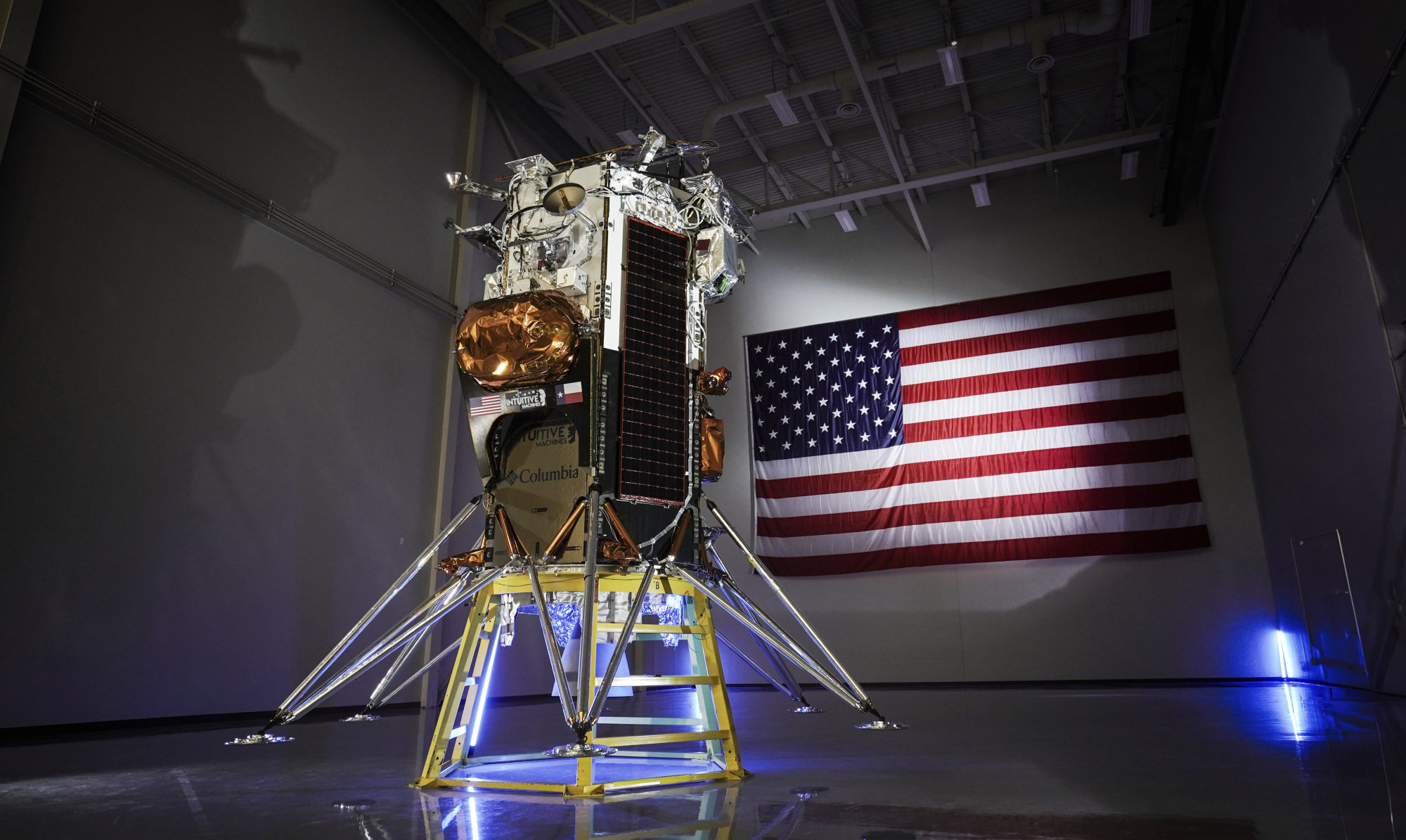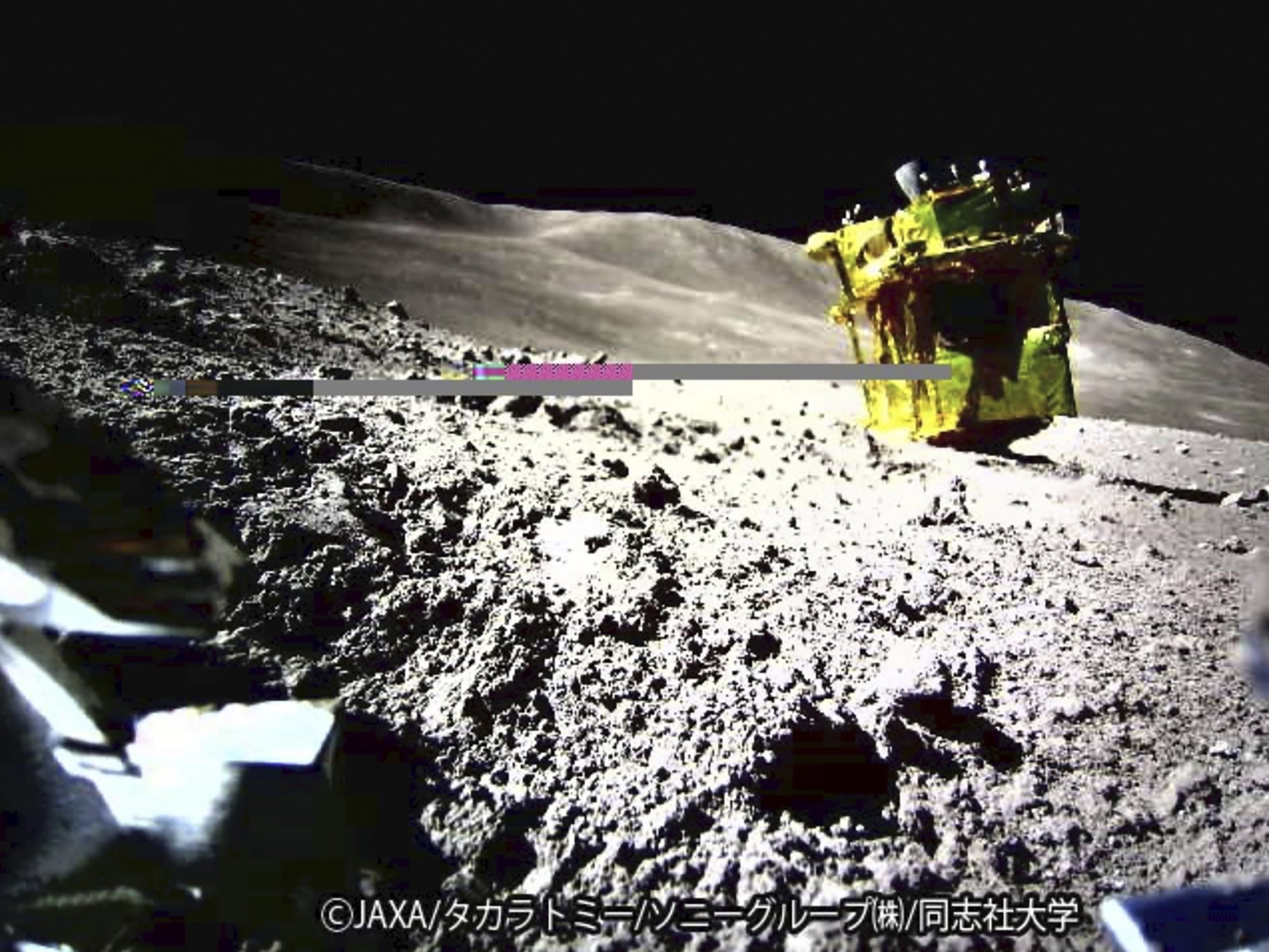Intuitive Machines will eventually send two additional landers to the moon in partnership with Nasa.
As national space ambitions grow and the business of space expands, firms have raced to claim the title of landing the first private craft in one piece on the moon.
None was successful until Thursday. An Israeli non-profit, SpaceIL, tried in 2019, but its craft came in too fast and crashed on the surface. Last year, Tokyo-based Ispace lost contact with its lander.
And in January, Pittsburgh-based Astrobotic’s lander suffered engine failure just after reaching space.
Chinese and US astronomers make lunar history with moon landing
Chinese and US astronomers make lunar history with moon landing
Since the US successfully put people on the moon half a century ago, why did it prove so difficult for companies – even countries – to do it again?
The moon is a harsh environment. It’s difficult to design spacecraft that can navigate its surface and it’s almost impossible to recreate those situations on Earth for testing.
And private companies’ resources pale in comparison to what Nasa had in the 1960s: a war chest that once ballooned to roughly 4 per cent of the overall US federal budget.
The biggest hurdle may have been the 21st century engineers and companies with little or no moon shot experience. It has been more than 50 years since people have designed and sent landers to the moon, so firms were starting from almost scratch and working with novel technologies.
“We say we’ve been there before, but these companies haven’t been there before,” Phillip Metzger, a planetary physicist at the University of Central Florida, said in an interview. “It is really new technology that’s being perfected and matured right now.”
Nasa had turned its attention away from the moon after the last Apollo mission in 1972 to focus on the space shuttle, the International Space Station and other goals.

Various administrations proposed returning to the moon, but those programmes didn’t survive political headwinds. But in 2017, President Donald Trump spurred Nasa to launch the Artemis initiative to send humans back.
The space agency’s goal is to create a sustainable presence on the moon, claiming that learning to live and work there will help ultimately allow humans to explore the solar system.
This means lots of lucrative government contracts. And unlike the Apollo era, private companies have the potential to make it there – with a little help from Nasa. Intuitive Machines and Astrobotic both partnered with the space agency’s CLPS programme, designed to help spur the development of commercial landers for Artemis.
Yet physical challenges remain for lunar exploration. Just travelling through the vacuum of space to reach the moon is a struggle to begin with.
Spacecraft must deal with wild swings in temperature, depending on which parts of the vehicle are facing the sun, and they’re often bombarded with cosmic rays – irradiated particles streaming from the sun or deep space that can easily fry electronics that aren’t well protected.
The moon is roughly a quarter the width of our planet, with much less gravity overall, making it hard to manoeuvre into orbit. Its rough terrain, craters and other factors spreads the gravity unevenly.

“When you orbit the moon, you will eventually crash into the moon because the lumpy gravity will perturb your orbit,” Metzger said. “Because of that, you have to have navigation that understands precisely where you are and can adapt in real time.”
Unlike Earth, which has an atmosphere that helps cushion the fall of returning spacecraft, the moon has almost no atmosphere.
To land there, practically all spacecraft must use some form of rocket engine to lower themselves gently to the ground below. The spacecraft must burn their engines so precisely that they come to a relative stop just above the surface. Otherwise they risk crashing.
Japan’s ‘Moon Sniper’ lunar lander rouses from 9-day sleep after wonky touchdown
Japan’s ‘Moon Sniper’ lunar lander rouses from 9-day sleep after wonky touchdown
All this requires knowing what the spacecraft is about to land on. Robotic landers often rely on information collected by the vehicle’s sensors, as well as imagery of their landing target collected ahead of time, which is often not very high resolution.
Complicating things is the moon’s distance from Earth. There’s usually a few seconds of delay when sending commands to these spacecraft.
“You have to do this all autonomously,” Addie Dove, an associate professor at the University of Central Florida working on a moon landing mission, said. “There’s no way for a human to correct things in real time just because of how quickly it all happens.”

This can lead to issues like the ones faced by Ispace in 2023. It eventually figured out that its moon lander suffered a software glitch and misjudged the height of the terrain below, causing it to run out of fuel and crash.
And sometimes there are hardware failures. In January, the Japan Aerospace Exploration Agency landed its Smart Lander for Investigating Moon spacecraft within 55 metres (180 feet) of its intended target.
An apparent engine issue led the vehicle to touch down on its head, instead of its side. So while it landed intact, its mission ended early as it could not properly recharge its solar panels.
US-China space race fuelled by lunar landings and orbital ‘parking spots’
US-China space race fuelled by lunar landings and orbital ‘parking spots’
An added layer of difficulty for Intuitive Machines was its assigned target. Originally, the company hoped to land near the moon’s relatively flat equator, which is where all the Apollo missions landed.
But Nasa asked the company to change its landing site to the moon’s south pole region – a spot that numerous countries have been eyeing and that India neared with the landing of its Chandrayaan-3 last August after a Russian attempt failed.
Data collected by robotic spacecraft visiting the moon has confirmed that many of the south pole’s craters may contain pockets of water in the form of ice.
Nasa and others are potentially interested in mining this ice, which could be used for drinking water or crops. If broken apart into its elemental components – hydrogen and oxygen – the water could also become future propellants for rockets. But it remains to be seen how much ice there is and what state it’s in.
Nasa ultimately hopes to land future Artemis astronauts in this region and is relying on the US’ first on-the-ground view from Intuitive Machines’ lander.
The region is heavily pockmarked with craters, and getting there from orbit is even harder than getting to the equator. Changing the landing location required extra analysis and engineering – almost like planning an entirely new mission.
Nasa delays astronaut moon landing to 2026 amid spacecraft ‘challenges’
Nasa delays astronaut moon landing to 2026 amid spacecraft ‘challenges’
“We’re going to completely different places on the moon that we’ve never been,” Dove said. “It’s sort of like saying we’ve explored all of Antarctica or all of Africa when we’ve only been to the coast.”
While moon spacecraft go through years of testing on Earth, the only way to know if they will succeed is to test them in space. But even that has its limits.
“If you crash too many times, then the politicians make you quit trying,” Metzger said. “If it’s a commercial effort, then the investors pull out. So you don’t have an infinite number of tries.”
For Intuitive Machines, the first try appears to have worked. And in the words of Nasa Administrator Bill Nelson, that feat “shows the power and promise of Nasa’s commercial partnerships”.


